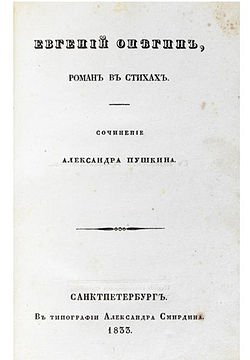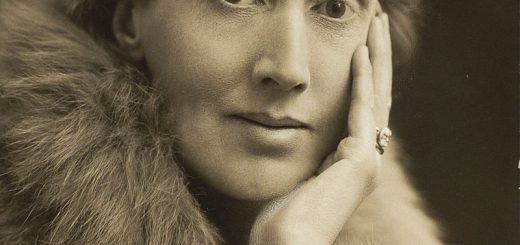Alexander Pushkin: Biography, Most Famous Works & Accomplishments

Alexander Pushkin – biography and accomplishments
Who was Alexander Pushkin?
For the quintessential Russian poet and author Alexander Pushkin, life was about penning remarkable literary work, including poems that, in a way, communicated his rich and mixed heritage of Russian and African nobility to his audience. But after his works began to get overly critical of the Russian monarchy, the talented poet was exiled to Siberia in 1820.
His works were heavily censored for long periods of time by the reigning tsar. Ultimately, he was allowed to return to Moscow with slightly more relaxed supervision.
Pushkin’s works like “Eugene Onegin”, “Ruslan and Ludmila”, “The Bronze Horseman”, “The Stone Guest”, “Boris Godunov” have etched their names as some of the best literary pieces in Russian literature. As a result, he is generally seen as one of Russia’s greatest poets of all time.
In 1837, Pushkin sustained a life-threatening injury during his duel with his brother-in-law Baron Georges d’Anthès, a longtime admirer of his extremely beautiful wife. The poet, aged 37, passed away two days later and was survived by his wife and children.
Impact of his works on Russian literature and beyond
With a life that inspired romantic poems not just in Russia but across the globe, Alexander Pushkin is widely hailed as Russia’s greatest poet, author, and the founder of modern Russian literature. This noble poet with African ancestry was a gifted writer who showed the world his talent at the age of fifteen and is credited for replacing the era of Russian Orthodox Church literary works with a more accepted story-telling style of expressing drama, romance and satire.
Although known for his dissolute and undisciplined lifestyle, Pushkin triggered the Russian autocratic monarchs by writing about controversial topics including, racism, social injustice, and political humor.
The great-grandson of an African slave

Alexander Pushkin’s great-grandfather was Abram Gannibal (1696-1781). Bust in Petrovskoe.
Pushkin was born into a noble family. His father, Sergei Lvovich Pushkin, was from a Russian family that traced its nobility back to the 12th century. Pushkin’s mother, Nadezhda (Nadya) Ossipovna Gannibal, was the granddaughter of Abram Petrovich Gannibal (sometimes written as Ibrahim Petrovich Hannibal) who was a high-ranking military officer and engineer in Russia.
Major General Gannibal was kidnapped as a young boy from Africa, some historians believed he was taken from modern-day Eritrea while some argued he was kidnapped from Logone-Birni in Central Africa, probably present-day Cameroon. Gannibal, who according to some accounts was the son of African prince, was taken to Constantinople (present-day Istanbul, Turkey) to serve under the Ottoman Sultan. He was later transferred to Russia and given to the tsar Peter the Great as a gift.
The Tsar became fond of young Gannibal and made him his godson conferring him the title of “Petrovitch”, meaning Peter’s son. Gannibal, who was given a sound education, became one of Russia’s leading military figures and greatest engineers.
Alexander Pushkin was therefore a man who took immense pride in his ancestry, especially that of his African roots. As a result, he was nicknamed “Afrikanets” (“the African”).

Alexander Pushkin was very proud of his ancestry, especially that of his African roots. His great-grandfather was Ibrahim Petrovich Gannibal, an African slave, who ultimately rose to immense prominence in the court of Peter the Great, one of Russia’s most famous tsars.
Alexander Pushkin’s Early Life and Works
Pushkin was born in Moscow in 1799. He grew up speaking mostly French because he was taught by French tutors and governesses. This brilliant mind wrote his first major literary work “The Messenger of Europe” at the age of fifteen.
He was among the first graduating class at the Imperial Lyceum in Tsarskoe Selo near St. Petersburg and soon became famous for his writings. His romantic narrative poem “Ruslan and Lyudmila” gained wide recognition and stirred controversy in 1820. Pushkin was known for his unconventional ways and he soon became a member of the divisive Green Lamp Association where he wrote some subversive political poems that angered the strict monarchy government. Some of his poems, especially “Ode to Liberty”, ended being used by the members of the Decembrist Uprising of 1825.
When the tsar got wind of Pushkin’s anti-monarchist activities, the poet was sent on exile in May 1820 to Kishinev. He then moved to Caucasus and Crimea, where he penned the much acclaimed poems “The Captive of the Caucasus”, “The Robber Brothers”, and “The Fountain of Bakhchisaray”.

His poem “Ode to Liberty” was written around the time he graduated from the Lyceum. His public recital of the poem, among other things caused a huge uproar among royalists. This led to his exile by Tsar Alexander I. Image: Pushkin reciting his very controversial poem “Ode to Liberty”
Most Famous Works
In 1823, it was revealed this restless genius was having an affair with the wife of the governor-general of Odessa.
As a result, he was exiled again to his mother’s estate of Mikhailovskoye in northern Russia, where he wrote his verse-novel “Eugene Onegin”. It was rumored the work was inspired by his affair with Elizaveta Vorontsova. Published in a serial format between 1825 and 1832, the poem explores themes of love, passion, and death. Immersed deep in allusion, the poem looks at the link between reality and fiction.

Eugene Onegin – one of Alexander Pushkin’s most famous works. He started working on his “Eugene Onegin” and “Boris Godunov” while in exile.
His stay at Mikhailovskoye was very productive as he wrote other notable works, including “The Gypsies” and his ballad “The Bridegroom”. He also on the historical tragedy “Boris Godunov”, which was eventually published in 1831. “Boris Godunov”, a work slightly based on the life of Russian ruler Boris Godunov (Tsar of Russia from 1598 to 1605), consists of 25 scenes. Pushkin penned many of the scenes in the poem in blank verse.
Greatly influenced and proud of his great-grandfather’s African origin, he started writing the romance novel titled “Blackamoor of Peter the Great” (meaning “The Negro of Peter the Great”) in 1828. He proudly writes about how his great-grandfather was brought to the court of Peter the Great as a servant and was elevated to a godson.
After the Decembrist Uprising of 1825 was crushed, the new tsar Nicholas I took note of Pushkin’s popularity and allowed him to return to Moscow in 1826 with the promise that the poet would write freely. Pushkin, seeking more social reforms from Nicholas I, wrote the historic poems “Poltava” and “The Bronze Horseman” in 1833.
The poem “Bronze Horseman” was about a little hero who is grief stricken by the loss of his lover finds himself pursued through the streets by the “Bronze Horseman” which turned out to be the image of Peter I. This emotional poem is considered by some historians as the greatest in Russian literature.
With the tsar’s censorship becoming more intense on Pushkin’s works, the young writer continued to pen his thoughts in works like “To My Friends” and “Egyptian Nights” from 1827 to 1830.
Some of Pushkin’s other works are “The Covetous Knight”, “Mozart and Salieri”, “The Stone Guest”, “Feast in Time of the Plague”, and “The Queen of Spades”.
More on Alexander Pushkin and his works
- Pushkin has been praised by scholars for his broad knowledge in literature. It’s said that he was influenced by English writers such as William Shakespeare and Lord Byron.
- After his marriage in 1831, Pushkin was invited to the Tsar’s court and was given the title “Gentleman of the Emperor’s Chamber”, which did not sit well with the noble writer. Regardless, he continued to write, perhaps to spite Tsar Nicholas I. A few of his works within the period of 1834 to 1836 are “The Captain’s Daughter”, and “A History of Pugachov”.
Personal Life

By his wife Natalia, Pushkin fathered four children. Image: Pushkin’s wife – Natalia Goncharova, 1849
In 1831, Pushkin married 18-year-old Natalya Goncharova who was reported to be one of the most beautiful women in Russia. By 1836 the couple had four children, Maria, Alexander, Grigory, and Natalia. It’s been revealed that Pushkin’s descendants are spread across Europe today, with one of them being Gerald Grosvenor, the sixth Duke of Westminster.
Duel with Georges d’Anthès
Perhaps owing to her exceptional beauty his wife Natalya Goncharova had many admirers and was rumored to have many lovers, including her brother-in-law Baron Georges d’Anthès. Pushkin heard of the alleged affair and challenged d’Anthès to a duel. The pistol duel took place on February 8, 1837; and Pushkin was shot in the stomach while his opponent only suffered a slight bullet graze on his right arm.
Death
Two days after the duel, on February 10, 1837, Alexander Pushkin died from the wound he sustained. He was only 37 years old, and one can only imagine the kinds of works he could have produced had he lived to a ripe age.
Pushkin’s funeral attracted many thousands of mourners. The renowned Russian poet was buried beside his mother in present-day Pushkinskiye Gory, near Pskov.
Following Pushkin’s death, it was rumored that his widow Natalia became the mistress of Nicholas I. Ultimately, Natalia tied remarried in 1844. She tied the knot with Major-General Petr Petrovich Lanskoy (1799–1877), who was a military colleague of her brother. Natalia gave birth to three more children: Alexandra (b. 1845), Elizaveta (b. 1846) and Sophia (b. 1848).
What was his legacy?
Pushkin’s literary works transcended boundaries; he made Russian literature accepted across the world. He improved the Russian literary styles and lexicon; he made it more expressive and personable. He was one of the first to publish a magazine “The Contemporary” which allowed him to become a major influence on the work of Ukrainian playwright Nikolai Gogol.
Pushkin has been honored years after his death; a museum in Moscow was named after him. The Pushkin State Museum of Fine Arts in Moscow posthumously commemorates the poet.
His birthday, June 6, has been celebrated as the United Nations Russian Language Day since 2010.
The second largest diamond found in Russia in December 1989 was named Alexander Pushkin diamond.
A film inspired by Pushkin’s duel was released in 2006 named “Pushkin: The Last Duel”.
A monument in honor of the Russian literary genius was unveiled in 2009 in Eritrea. There is also a bust of him in Addis Ababa, Ethiopia, close to the African Union (AU) headquarters.
Alexander Pushkin: Fast Facts

Pushkin’s African heritage, Boyar roots and link to Peter the Great were beautifully captured in a number of his works, most famously in “Blackamoor of Peter the Great”. Image: Monument to Aleksandr Pushkin located in Pushkin Park in Mexico City
Born: June 6, 1799; Moscow
Died: February 10, 1837; Saint Petersburg
Cause of death: Peritonitis – swelling of the lining of the inner wall of the abdomen
Education: Tsarskoye Selo Lyceum
Spouse: Natalia Pushkina (married in 1831)
Children: Natalia, Grigory, Alexander, and Maria
Parents: Sergei Lvovich Pushkin and Nadezhda Ossipovna Gannibal
Most famous works: “Eugene Onegin”, “Ruslan and Ludmila”, “The Bronze Horseman”, “The Stone Guest”, “Boris Godunov”



























